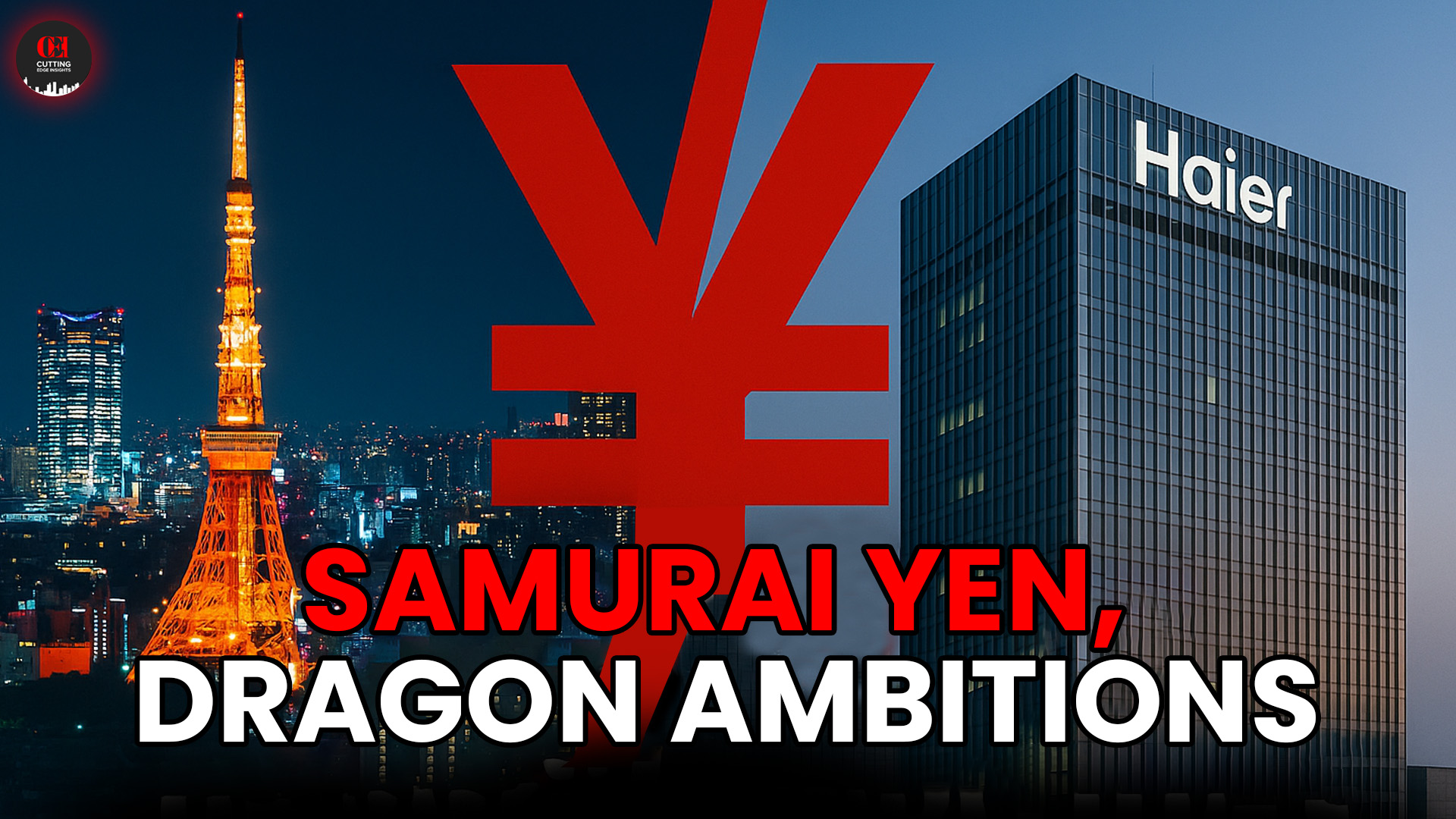How an unrated Chinese lender hacked Japan’s cheapest money spigot—and what it signals for Asia’s next wave of cross-border finance
The whisper shaking Nihonbashi
When word leaked that Haier Financial Services had sewn up a ¥29.9 billion Samurai loan, Tokyo’s syndicate desks did a collective double-take. Samurai loans—yen financings sold in Japan under local law—are hardly new, but they have long been the terrain of blue-chip, investment-grade issuers. Haier is neither rated nor a household name in Japanese boardrooms, yet demand for its deal reportedly outstripped supply within days.
What makes a Samurai loan special?
Borrowers get three plums at once: ultra-low coupons courtesy of Japan’s near-zero short-term rates, access to a deep pool of insurer and regional-bank liquidity hungry for yield, and straight-forward documentation in English on the Tokyo PRO market. Investors, meanwhile, nab foreign credit spreads without taking currency risk because principal and interest are paid in yen. It is the ultimate carry trade in bond form, and 2025 volumes are already racing toward last year’s ¥1 trillion record.
Why Haier, why now?
Chinese corporates have retreated from the dollar market as five-percent Fed rates and Washington’s disclosure rules bite. Onshore, Beijing’s own deleveraging push is nudging funding costs higher. The yen, by contrast, is flirting with three-decade lows against the dollar. For treasurers in Qingdao, that is catnip: raise yen at sub-one-percent, execute a cross-currency swap, and land renminbi or dollars below mainland benchmarks. Haier also secures tenor diversity—its domestic leasing book is financed largely with one-year commercial paper, whereas the Samurai loan stretches to five.
Unrated but not unknown
Tokyo’s buyers swallowed the lack of a formal rating because Haier Group, the world’s largest white-goods maker, quietly provided a keep-well letter. In Japanese credit folklore, a parent comfort letter from a quasi-state industrial champion is almost as good as a rating. Add a chunky yield pick-up over Japanese Government Bonds and the order book sells itself.
The surge behind the headline
Haier’s splashy entrance is part of a broader boom. State Bank of India printed ¥30 billion in December, Czech energy group EPH tapped ¥80 billion in February, and logistics park operator CTP signed a ¥30 billion sustainability-linked facility in March. With global dollar liquidity tight and Europe’s ECB still hawkish, Tokyo has become the cheapest big-ticket window for corporates from Prague to Perth.
The arbitrage math in three quick steps
- Borrow ¥ at 60–90 bps over TONA.
- Enter a five-year basis swap into dollars or renminbi at roughly 40 bps.
- Net all-in cost lands around 2 ½ percent—well below Chinese onshore bonds or US high-grade. That saving compounds over a multi-billion-yen notional, easily justifying the legal legwork.
China-Japan détente by spreadsheet
Politicians may spar over semiconductors, yet financial regulators are quietly greasing the rails. Japan’s Financial Services Agency now accepts English legal opinions, slashes withholding-tax red tape, and encourages ESG-linked structures that align with Tokyo’s green-finance ambitions. For Beijing, yen borrowing fortifies its multi-currency funding strategy, reducing reliance on US capital at a moment when secondary-sanction rhetoric is rising.
Investor watchlist: two looming risks
Currency whiplash looms large. A decisive Bank of Japan exit from yield-curve control could catapult the yen stronger, inflating swap costs for anyone who hedged only partially. Equally potent is geopolitics: a flare-up over rare-earth exports or Taiwan could see Tokyo regulators hit the brakes on Chinese approvals, trapping issuers mid-pipeline.
The youth angle—why you should care
If you are a twenty-something investor or even a side-hustle entrepreneur, this deal matters. It shows how a company without a global rating can still tap oceans of cheap cash by arbitraging currencies—a playbook that could trickle down to startup venture debt or even the mortgage rates Japanese banks offer foreign professionals. It also hints that Asia’s capital markets are fragmenting into multi-hub ecosystems where Tokyo competes with Singapore dollar bonds and Dubai dirham sukuk. Diversified funding equals competitive pricing on everything from smartphones to smart-home rentals—products Haier sells to your dorm room.
What happens next?
Expect a queue of unrated but state-linked Chinese subsidiaries—battery leasing arms of CATL, port-logistics units of COSCO—to road-show Samurai structures before year-end. Bankers whisper that aggregate 2025 Samurai volumes could smash the ¥1.3 trillion mark if just half of the current pipeline prices. Meanwhile, Haier is likely swapping at least two-thirds of its proceeds into renminbi to expand supply-chain financing for appliance dealers, while keeping a yen pocket to bankroll its fast-growing rental programme for Japanese students.
Bottom line
Haier’s ¥29.9 billion Samurai loan doesn’t just pad its balance-sheet—it rewrites the rulebook for unrated Chinese credits hungry for global scale in a bifurcating financial world. Cheap yen, savvy swaps and a dash of geopolitical pragmatism have opened a new capital bridge between Qingdao and Tokyo, one that could reshape Asia’s debt map long after the ink dries on this deal.












